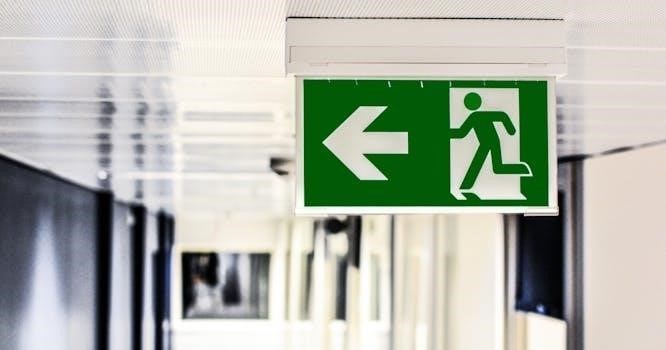Understanding floral pricing involves navigating various factors that influence the final cost. From the type of flower to seasonality, arrangement complexity and vendor, each plays a significant role in determining price.
Understanding the Basics of Floral Costs
The fundamental aspects of floral costs begin with the flowers themselves, including their variety and availability. Perennial flowers, which bloom year after year, may have different pricing structures compared to annuals. Prices can also fluctuate based on the season, with certain flowers being more expensive during off-peak times. Furthermore, the cost of materials like vases, floral foam, and decorative elements are added. Labor charges for the florist’s time and expertise in designing and arranging the flowers will also impact the price. Additionally, delivery and service fees contribute to the final total. Therefore, a comprehensive understanding of these basic elements will help customers make better informed decisions when purchasing floral arrangements, and be aware that prices may vary quite dramatically.
Factors Influencing Flower Prices
Several elements affect flower prices, including the type of flower and its seasonality, the complexity of the arrangement, and the vendor and their location.
Type of Flowers and Seasonality
The specific type of flower significantly impacts its cost. Some flowers, like those that are perennial, bloom year after year, while others are seasonal, only available during certain times. This seasonality directly affects price, with out-of-season blooms often costing more due to increased sourcing efforts. For instance, popular choices such as Anthurium, Calla Lily, and Chrysanthemum vary in price, with certain varieties and stem lengths also influencing the overall cost. Flowers that need to be shipped from distant locations or require specialized growing conditions will generally command higher prices compared to locally grown and readily available flowers. The rarity of a particular bloom also plays a role in its pricing.
Arrangement Size and Complexity
The size and complexity of a floral arrangement are crucial determinants of its final price. Larger arrangements, which naturally require more flowers and materials, will cost more than smaller, simpler designs. The intricacy of the design also plays a significant role; elaborate arrangements that involve specialized techniques or unique floral combinations demand higher prices. A basic bouquet will be less expensive than a complex cascading centerpiece, for example. Additionally, arrangements that require specific structural elements or non-floral components increase the overall cost. The labor involved in creating such complex designs, which may require more skilled florists, also impacts pricing, reflecting the time and expertise needed.
Vendor and Location
The vendor you choose significantly impacts floral prices. High-end florists in upscale locations will usually charge more than smaller, local shops, reflecting their brand reputation and overhead costs. Location also plays a critical role; florists in major cities or areas with higher cost of living tend to have higher prices compared to those in smaller towns or rural regions. The florist’s expertise, services offered, and the quality of flowers they source will be reflected in their pricing. Additionally, florists who specialize in custom designs or have a strong online presence may have different pricing structures. Consider both the vendor and your location to make informed decisions.
Specific Floral Item Pricing
Pricing varies greatly depending on the specific floral item; corsages, bridal bouquets, and other arrangements have unique cost structures influenced by flower type and complexity.
Corsage Pricing Guide
Corsage pricing is quite variable, typically ranging from $15 to $65, depending on several key factors. The type of flowers selected has a significant impact; exotic or rare blooms will naturally increase the price, whereas more common flowers will keep costs down. The design intricacy also plays a role, with complex arrangements requiring more time and skill, which reflects in the price. The vendor’s location can also affect the pricing. Florists in high-cost areas may have higher base prices. Seasonal availability of flowers is another important consideration. Out-of-season flowers may be more expensive due to sourcing difficulties. Moreover, specific add-ons, such as ribbons, pearls, or other embellishments, will also contribute to the overall cost of the corsage. When ordering, clarify the desired flowers, design, and any extras to get a precise quote and avoid surprises.
Bridal Bouquet Average Costs
The average cost of a bridal bouquet typically hovers around $160, though this can fluctuate considerably based on various factors. The specific types of flowers chosen are a major determinant; rare, exotic, or out-of-season blooms will elevate the price, while more readily available, in-season flowers will be more budget-friendly. The size and complexity of the bouquet also contribute; larger, more elaborate designs with intricate detailing require more materials and labor, increasing the cost. Furthermore, the florist’s experience and location can impact pricing. Highly sought-after florists or those located in upscale areas might charge higher rates. It’s advisable for couples to establish a clear budget early on. Discuss desired flowers, style, and size with the florist to obtain an accurate estimate. Booking your florist in the early stages of wedding planning can also help with cost management.
Special Occasion Pricing
Special occasions often see price surges in floral arrangements, most notably on Valentine’s Day. Demand can cause flower prices to increase significantly, sometimes by 30% or more during such peak periods.
Valentine’s Day Flower Price Increase
Valentine’s Day represents a significant peak in floral demand, leading to a notable increase in flower prices. This surge is driven by the high volume of purchases made for romantic gestures on this particular day. The prices for flowers, especially popular choices like roses, can increase by up to 30 percent compared to their regular costs. Many individuals are willing to pay these inflated rates to express their affection. Some people even buy and send flowers to themselves, further contributing to the increased demand. This phenomenon affects not only the cost of individual flowers but also impacts the price of entire floral arrangements. Therefore, customers should anticipate higher prices when purchasing flowers around this holiday, due to the heightened demand in the market. Planning and purchasing in advance can sometimes help mitigate the extra costs.
Additional Cost Considerations
Beyond the cost of flowers, materials like vases, ribbons, and fillers influence the total price. Delivery and service fees are also crucial factors to consider when buying floral arrangements.
Material Costs Beyond Flowers
When calculating the overall cost of floral arrangements, it’s crucial to consider expenses that go beyond just the flowers themselves. These additional material costs can significantly impact the final price of your bouquet or arrangement. Items like vases, which vary widely in price depending on their material, size, and design, are a major consideration. The cost of floral foam, used to hold arrangements in place, can add up, especially for larger designs.
Ribbons, decorative wires, and other accessories also contribute to the material costs. Furthermore, the price of filler materials, such as greenery and other non-floral elements used to enhance the visual appeal and volume of an arrangement, should be included. All these elements, while seemingly small, can significantly influence the total expense, so it is important to be aware of them when budgeting for floral purchases.
Delivery and Service Fees
In addition to the cost of the flowers and materials, delivery and service fees are important factors that contribute to the final price of your floral purchase. These fees can vary greatly depending on the florist, location, and the distance of the delivery. For local deliveries, a flat fee may be charged, while longer distances might incur higher costs. Some florists may have tiered delivery fees based on location and urgency of delivery.
Service fees can also cover various aspects such as the time and expertise of the florist in creating the arrangement, as well as any special handling requirements. During peak seasons or holidays, like Valentine’s Day, these fees may be higher due to increased demand. It’s advisable to inquire about these costs upfront to avoid any surprises when finalizing your floral order.

